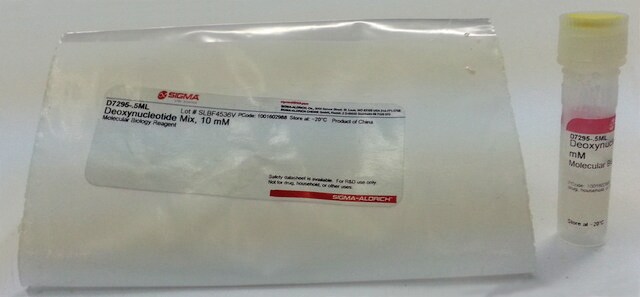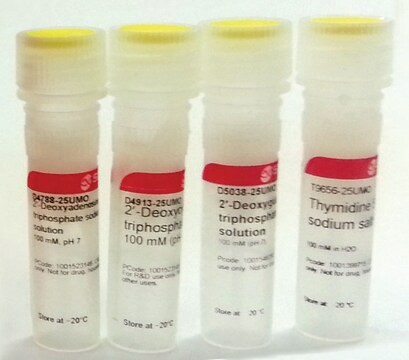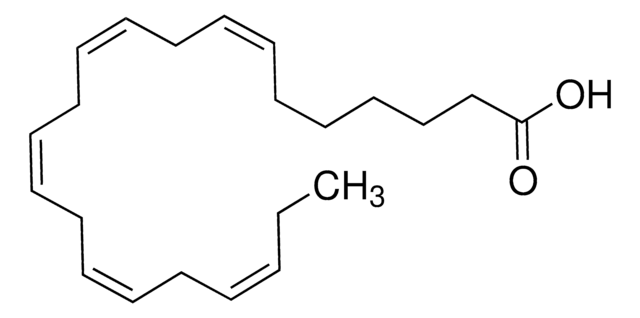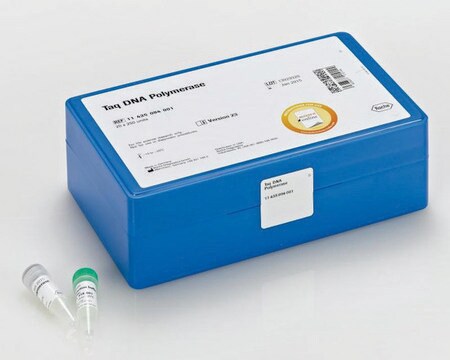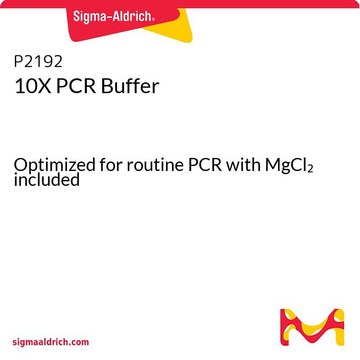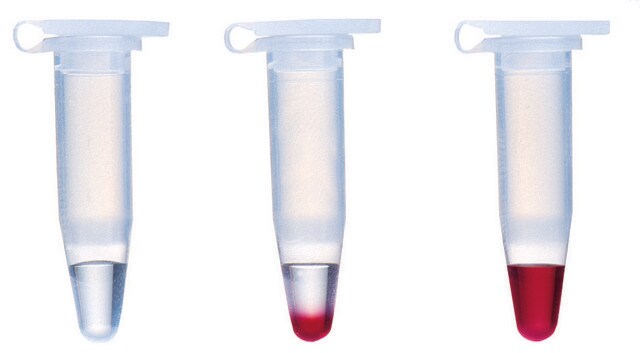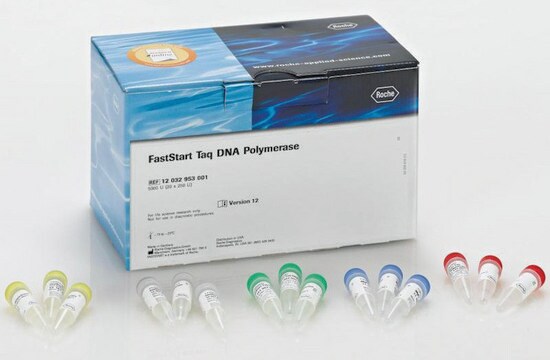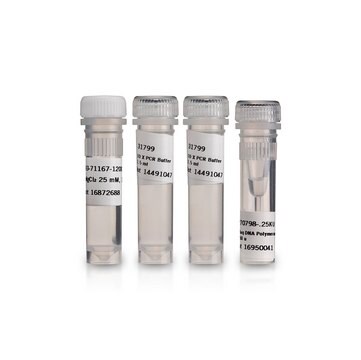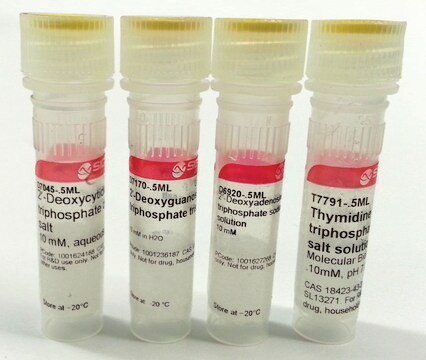推薦產品
生物源
enzyme from bacterial (Thermus Aquaticus)
品質等級
重組細胞
expressed in E. coli
形狀
liquid
用途
sufficient for 1500 reactions
sufficient for 250 reactions
sufficient for 50 reactions
sufficient for 5000 reactions
特點
dNTPs included: no
hotstart: no
濃度
5 units/μL
技術
PCR: suitable
顏色
colorless
輸入
purified DNA
適合性
suitable for PCR and automated sequencing reactions
應用
agriculture
運輸包裝
wet ice
儲存溫度
−20°C
尋找類似的產品? 前往 產品比較指南
相關類別
一般說明
應用
- DNA提取过程(基因扩增和测序过程)
- 基因分型
- 聚合酶链式反应(PCR),研究上皮中性粒细胞活化肽78 (ENA-78)和白细胞介素-8 (IL-8)的组成性产生
- 通过常规PCR扩增原代内皮细胞的RNA
生化/生理作用
特點和優勢
- 在单独的试管中提供MgCl 2,以优化MgCl2。
- 可以耐受反复加热至95 °C而不出现明显活性损失。
包裝
其他說明
單位定義
法律資訊
相關產品
危險聲明
防範說明
危險分類
Aquatic Chronic 3
儲存類別代碼
12 - Non Combustible Liquids
水污染物質分類(WGK)
WGK 2
閃點(°F)
Not applicable
閃點(°C)
Not applicable
分析證明 (COA)
輸入產品批次/批號來搜索 分析證明 (COA)。在產品’s標籤上找到批次和批號,寫有 ‘Lot’或‘Batch’.。
客戶也查看了
文章
Learn about the history of the polymerase chain reaction (PCR), from the basic principles that proceeded its discovery to the awarding of a Nobel Prize for Chemistry and more recent developments such as real-time PCR (qPCR) and digital PCR.
The polymerase chain reaction is one of the most widely used techniques in molecular biology. The PCR process consists of three main steps, Denaturation, Annealing & Extension
條款
Protocol using hot start dNTPs. Method includes modified nucleoside triphosphates that block DNA polymerase nucleotide incorporation during hot start PCR to increase specificity. Compatible with a variety of PCR reagents.
Hot Start dNTPs are modified with a thermolabile protecting group at the 3’ terminus. The presence of this modification blocks nucleotide incorporation by DNA polymerase until the nucleotide protecting group is removed during a heat activation step.
我們的科學家團隊在所有研究領域都有豐富的經驗,包括生命科學、材料科學、化學合成、色譜、分析等.
聯絡技術服務
